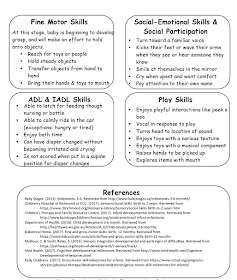Photo Credit: By Ambro@FreeDigitalPhotos.net
Let’s face it: many parents have no choice but to become excellent multitaskers. If you can’t help with homework while also folding the laundry, for example, one of those things just doesn’t get done. All too often, the need to get the most out of every waking moment means making a sacrifice here and there – usually missing out on something we as parents would like to do (morning jog, I’m thinking of you).
If you are one of those people with a jam-packed day who would feel so much better about getting some exercise if it didn’t mean sacrificing quality time with your little one, despair no more. You can indeed multitask this portion of your life as well! There are also many
benefits of exercise for kids, including developing their motor skills without them even realizing, so you get bonus points if you both get a workout.
Try out some of these simple ways to develop your little one’s motor skills while you squeeze in a workout.
1. Try out some of the
free “baby and me” workout videos that abound on YouTube. Many of these help develop hand-eye coordination for your baby while you do yoga, Pilates, cardio, strength training, or dance.
2. If your little one is a bit older, try some children’s exercise videos, also on YouTube (my preschooler loves the
Cosmic Kids Yoga series), to help your child learn to balance, stretch, follow instructions, jump, and more while you actually get a fairly decent (if brief) workout.
3. Show your little one how to roll, do the army crawl, crab walk, somersault, and more. Demonstrating the activities gives you the chance to work your core and upper body while teaching your child how to move in different ways. If they’re old enough to try to copy you, they’ll be working on coordinating the motion of their arms and legs to try new postures.
4. Have a dance party. The vast majority of physical exercise I got when my son was 1 and 2 was in the form of dance parties. Raffi, Beyoncé, whoever. You can make it aerobically intense for you while having your child dance, hop, twist, or play the (pot and pan) drums. “Head, Shoulders, Knees and Toes” and the good old “Hokie Pokie” have the added benefit of teaching body parts and additional skills while getting you both moving and grooving.
5. Jog with your little one in the stroller and attach
activity-based toys to keep them busy. These include books, shakers, mirrors, and other items with ties, buttons, springs, rattles and more. They will be happily occupied playing while simultaneously learning about colors, textures, physics, sounds, and more.
6. Reserve some of your coolest motor activity-based toys for your workout times. While you exercise, your little one can have a blast exploring a special toy that they only get to use during your workouts. This toy should be something that has lots of possible ways it can be used, such as a set of blocks, yarn pegboards or a kid-friendly toolkit.
Finding motor skill-building activities and
exercises for kids that they enjoy can be the key to fitting in a workout for you without relegating them to a seat in front of the TV. Best wishes for a dual-purpose workout, fellow multitaskers!




























